Review of enhancement for ocean thermal energy conversion system
Safaa Malik Abbas,Hend Dakhel Skhaal Alhassany,David Vera,Francisco Jurado
Department of Electrical Engineering, University of Jaen, 23700, EPS Linares, Jaen, Spain
Keywords:Ocean thermal energy conversion Organic rankine cycle Ammonia-water Liquid-vapor ejector Vapor-vapor ejector
ABSTRACT Ocean thermal energy conversion (OTEC) is a renewable energy source that uses differences in ocean water temperature between warm surface and cold depth to generate electricity.It is an essential link in the carbon neutrality chain and one of the rising sectors of the ocean energy.This paper provides an overview of studies on closed thermodynamic cycles and the numerous difficulties that OTEC technology faces.A description of the thermodynamic cycles incorporating mixed or pure working fluids,as well as the implications of different working fluids on cycle efficiency were also studied.Changes in condensing and evaporating temperatures induced by variations in heat resources affect the efficiency of cycles with pure working fluids.Several strategies,such as intermediate extraction regeneration and heat recovery of ammonia-depleted solution can increase the thermal efficiency with mixed working fluids.In addition,the impact of the ejector on the cycle’s performance is examined.Finally,the efficiency-improving strategies are described and summarized.Thermodynamic efficiency can increase using suitable working fluids and taking steps to maximize the rate of ocean thermal energy.To establish which approach is the most effective,different methods have been evaluated and compared under identical operating conditions.
1.Introduction
The ocean can produce energy by waves,tides and temperature variations.Some of these sources can be utilized to generate electricity,which could then be used to power homes,vehicles and industries [1–5].
Ocean thermal energy conversion (OTEC) is one of the permanent and accessible renewable energy sources that could contribute to the base-load power supply and its potential is substantially greater than other ocean energy types.The oceans absorb solar radiation and cover more than 70% of the earth’s surface,making OTEC systems an almost limitless source of energy because they rely only on the sun and ocean currents.This essentially makes them the world’s most effective energy storage systems.OTEC simply stores solar thermal energy due to the temperature difference in the ocean between the top warm water and deep cold water [6,7].OTEC can be used for different applications,including power generation and cooling.The fundamental premise of the OTEC technology is to heat up and evaporate a working liquid,then the created steam boosts the turbine to spin and generate electricity using surface warm ocean water (25–30 °C).The thermodynamic cycle is completed after the fluid is condensed again to a liquid state by the temperature of a deep cold-water source(4–6 °C) [8].
The efficiency of the cycle is strongly influenced by the water temperature difference.Greater temperature differences result in higher efficiencies.This occurs because of the available temperature difference in the water is limited (about 20 °C) and the thermodynamic cycle’s efficiency is generally low.The Carnot cycle efficiency (the perfect thermodynamic cycle in theory) is approximately 6.7% when the temperature difference is 20 °C.As a result,the selection of a suitable working fluid and thermodynamic cycle are the key parameters to increase the efficiency of the OTEC systems [9–11].
The existing OTEC systems now employ the closed cycle as their primary circulation technique.A working fluid that passes through a low boiling point in the OTEC cycle is commonly used,thus it can condense at low pressure and evaporate at high pressure.As a consequence,the pressure difference at the turbine inlet and output is increased [12].The goal of OTEC research has been to improve energy extraction through the employment of various techniques[13].
This article provides a review of the thermodynamic cycles and the most suitable working fluids used in the OTEC technology,as well as to provide a future research of the different technologies and difficulties presented.
2.The cycles with working fluids
2.1.Characterization of the closed cycles in the OTEC system
OTEC technology was firstly described by the French physician,physicist and inventor Jacques-Arsene D’Arsonval.He suggested the notion of using OTEC to produce power in 1881 [14].As the working fluid circulates in a closed-loop,D’Arsonval’s cycle is known as the OTEC closed cycle.The Rankine cycle,which uses pure working fluids,is the most basic OTEC thermodynamic cycle.Anderson proposed the closed-cycle OTEC system in 1964,based on the Rankine cycle [15].In 1979,the United States developed and built the world’s first closed-cycle OTEC power production plant (Mini-OTEC) in Hawaii,proving D’Arsonval’s premise [16].The Rankine cycle was the first closed-cycle OTEC power production technology and it is still being used today as one of the most fundamental,and often utilized,closed thermodynamic cycles.Isobaric heating,Isentropic compression,isobaric condensation and isentropic expansion are the four thermal processes involved [17].Condenser,evaporator,generator,turbine,seawater and working fluid pumps make up a Rankine cycle system.The working fluid completes the heat cycle in a closed-loop system where ammonia is the most commonly used in the OTEC Rankine cycle [18].
Due to isothermal evaporation and condensation of ammonia,the Rankine cycle suffers a significant irreversible heat exchange loss.As a consequence,the efficiency of the whole system is limited.The Rankine-cycle efficiency is restricted to 3–5% due to a modest temperature difference between the surface seawater and the deep cold water of the ocean (about 15–25 °C) [19] Table 1.summarizes the thermal efficiencies for the proposed closed thermodynamic cycles in the OTEC system.There have been several thermodynamic cycles studied following the temperature shift of the cold and warm sources to increase the efficiency of the OTEC thermodynamic cycle.
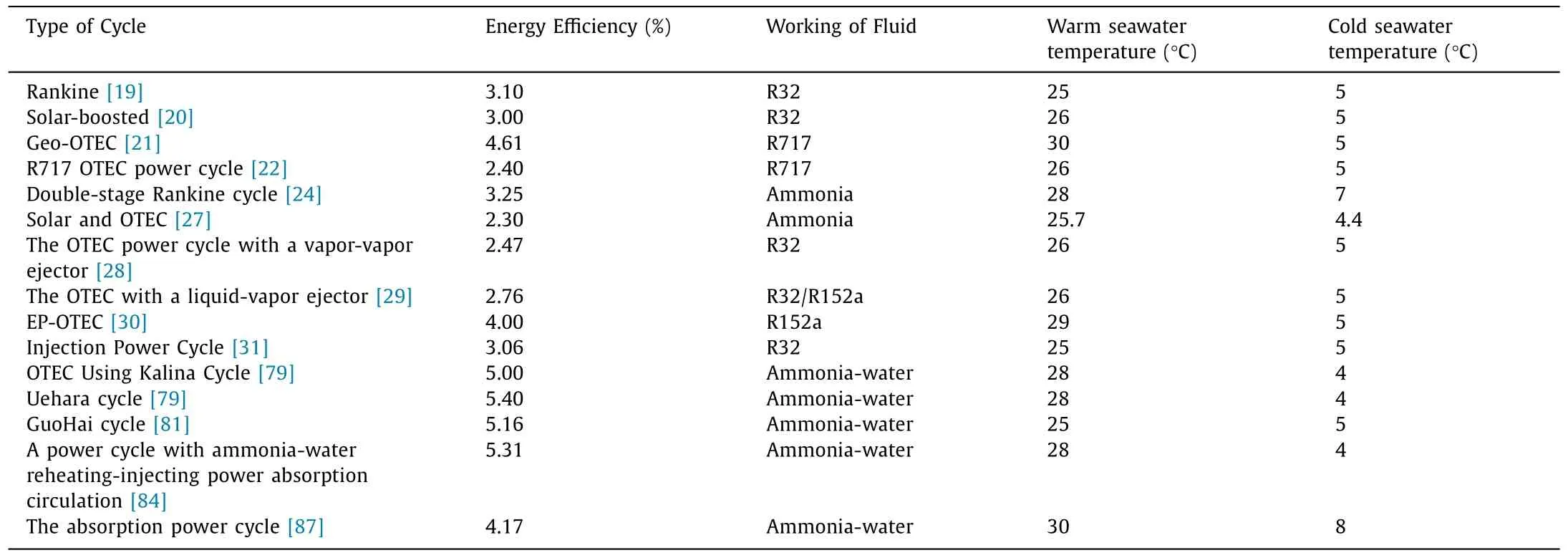
Table 1 Thermal efficiencies for the planned closed thermodynamic cycles in the OTEC.
Aydin et al.[20] studied how the solar energy can be used to increase the cycle efficiency.They compared the two methods using the Rankine cycle as a guide.Solar energy was used in the initial plan system to heat up the warm seawater and raise the temperature of the heat source;in a second part,it was employed to heat the working fluid directly at the turbine intake to a superheated state (Fig.1).According to the comparative data,the net thermal efficiencies of the first and second cycles were 1.9% and 3%,respectively,under identical conditions.It was also found that the solar collector area of the second cycle was less than the first one.
The geo-ocean thermal energy conversion (GeoOTEC) was proposed by Idrus et al.[21] in 2004.As shown in Fig.2.Firstly,the warm seawater is used to evaporate the working fluid and the geothermal source increases the temperature up to superheated conditions.Then,the superheated steam boosts the turbine before being condensed.The cycle is completed when the working fluid is introduced again in the evaporator.This work used ammonia as working fluid,the turbine inlet temperature was 80 °C and the thermal efficiency reached 4.61%.Furthermore,according to their calculations,the GeoOTEC system was less expensive than the OTEC device.
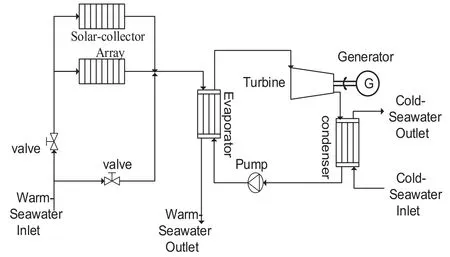
Fig 1. OTEC with a solar boost.
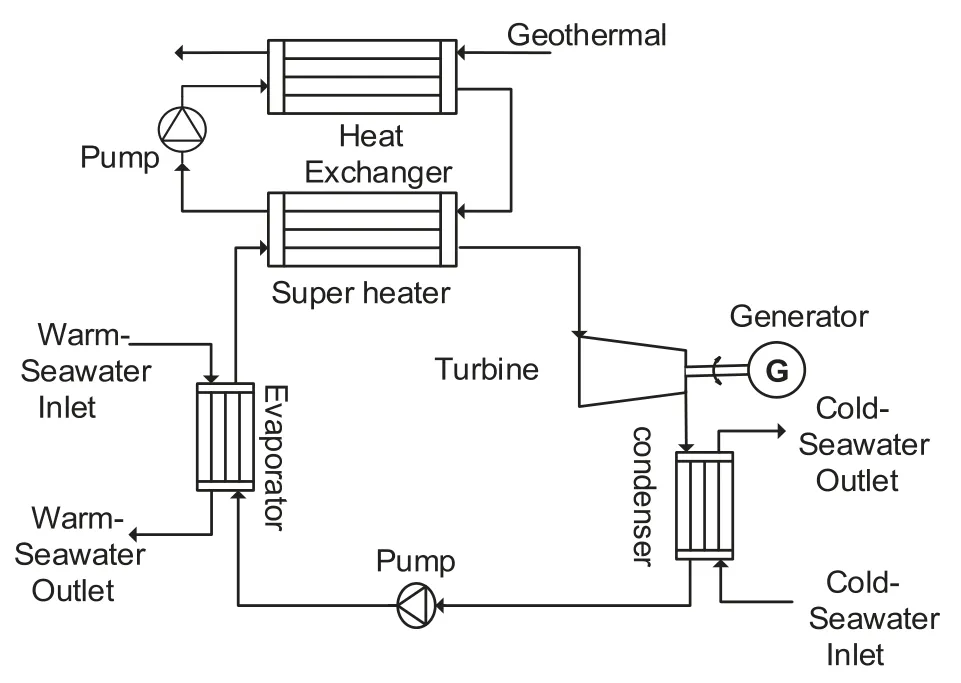
Fig.2. Geo-OTEC diagram.
Yoon et al.[22] studied a novel OTEC power cycle in 2014 that used ammonia as working fluid.As shown in Fig.3,using a cooler and a separator,this cycle minimized the heat released in the condenser when it is compared to the Rankine cycle.In addition,the regenerator used the heat from the expelled gas to minimize the heat absorption in the evaporator.The use of two-stage turbines also boosted the work output and efficiency.According to theoretical calculations,this novel cycle had an efficiency of 2.401%,with pump and turbine efficiencies of 65% and 80%,respectively.

Fig.3. R717 OTEC cycle of power.
Although the combination of NH3–H2O in the Kalina cycle minimized irreversible losses during the heat transfer step,due to variations in the concentration layer,the obtainable temperature difference and heat transfer coefficients were both reduced [23].As a result,the authors [24–26] presented a two-stage Rankine cycle together with a complete experimental study.This cycle is illustrated in Fig.4.It was unable to determine both,work output and thermal efficiency,since a pressure-reducing valve was employed to replicate the turbine in the experiment.Therefore,the test would not accurately reflect the current state of the system.Nonetheless,practical and theoretical studies indicated that when the working flow ratio was 1:1 in the two-stage cycle,the entropy and irreversible losses were at their lowest points,and the output work and efficiency were maximized.
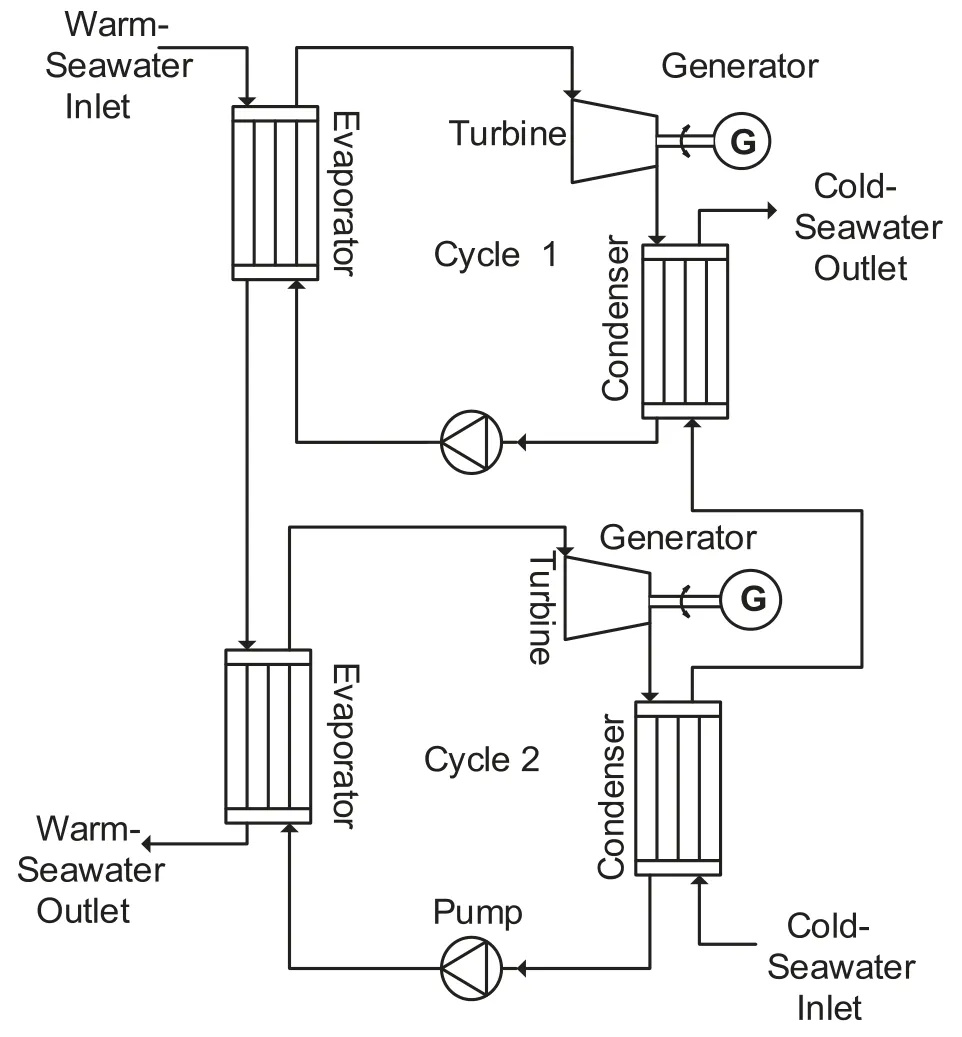
Fig.4. Double-stage Rankine cycle.
Yamada et al.[27] suggested SOTEC,a novel generation system (OTEC and solar).Both,solar thermal energy and ocean thermal energy,were employed resulting in a thermal efficiency of 1.5 times greater than a normal OTEC cycle.
Lee et al.[28] proposed an ejector for the OTEC cycle for boosting the turbine output and thermal efficiency.The layout of this system is depicted in Fig.5.The turbine 2 output pressure was less than the condensing pressure of the working fluid.At the meantime,a vapor-vapor ejector was used to raise the operating pressure difference.As a result,the output power in the turbine 2 rose by a set value of working fluid in circulation.Likewise,they looked at the extent of the influence of important parameters on cycle performance.The working fluid mass flow rate at the output,the turbine 1 output pressure and the ejector nozzle diameter were analyzed.According to this study,among all these parameters evaluated,the change in ejector nozzle diameter had the biggest influence in the thermal efficiency.When these performance parameters were optimized,the thermal efficiency of the OTEC cycle reached 2.47% (compared to the traditional Rankine cycle efficiency of 2.2%).

Fig.5. The cycle of OTEC with ejector as vapor-vapor.
The ejector type can vary depending on the working fluid thermodynamic state compared to the ejecting fluid.As previously stated,Lee et al.[28] utilized a vapor-vapor ejector,whereas Yoon et al.[22] suggested a liquid-vapor ejector [29] (Fig.6).The regenerator used the working heat medium and the ejector as liquidvapor,with the fluid of high-pressure resembling the gas and the working fluid being expelled at the turbine 1 outlet.This type of ejector was used due to the turbine 1 output pressure was lesser than the working fluid condensation pressure.The result of the work was enhanced and the system efficiency was improved without the expenditure of extra energy.Mass mixing ratios of R32:R152a were also investigated [29],and the best ratio was found to be 87:13.Furthermore,the thermal efficiency improved;while the amount of steam flow at the regenerator output grew and the total turbine work remained constant.Despite the fact that the mass fraction of the NH3–H2O combination was 0.95,the Uehara cycle had a thermal efficiency of 2.38% under similar operating conditions.In ideal conditions,this exclusive cycle reached a thermal efficiency of 2.76% and its components were decreased in size and cost.The OTEC power cycle for the ejector pump (EP-OTEC) was created by Yoon et al.[30] in 2017.As it is shown in Fig.7,the separator divided the saturated liquid working fluid in two parts.After traveling through pump 1 and evaporator,one portion became superheated steam with high pressure and temperature,which powered the turbine.The expelled gas was then employed as the ejector driving fluid.Pump 2 compressed the remaining half,which subsequently served as the working fluid in the ejector.The condensing pressure expelled these two sections of the working fluids out of the ejector after mixing them.The pump 2 outlet pressure was greater than the evaporation pressure in this cycle.However,the turbine 1 output pressure was less than the condensing pressure of the working fluid.As a consequence,the turbine operational pressure difference was increased and the thermal efficiency was 4.7%.When the temperature of the warm seawater reached 29 °C,the thermal efficiency of the cycle was 38%higher than Rankine cycle employing R152a as working fluid.In addition,the EP-OTEC cycle was less complicated (from the technology devices viewpoint) than the cycle previously proposed [28],potentially reducing the total cost of the power plant.
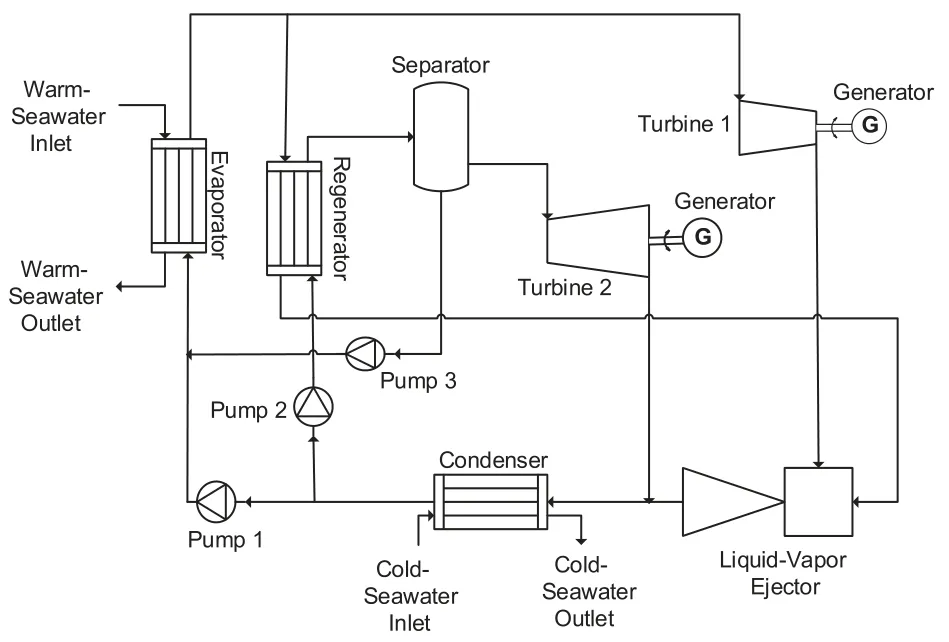
Fig.6. Cycle of OTEC with ejector as liquid-vapor.

Fig.7. The cycle of Ejector pump-OTEC.
Miljkovic [31] created a novel cycle in 2017 by including an ejector in the classic Rankine cycle.Fig.8 shows a diagram representing the new cycle.In this system,a small quantity of working fluid from the evaporator and condenser enter the ejector to inject the exhausted gas into the turbine output.These mixed in the ejector hall before passing through the condenser achieving a thermal cycle efficiency of 3.057%.
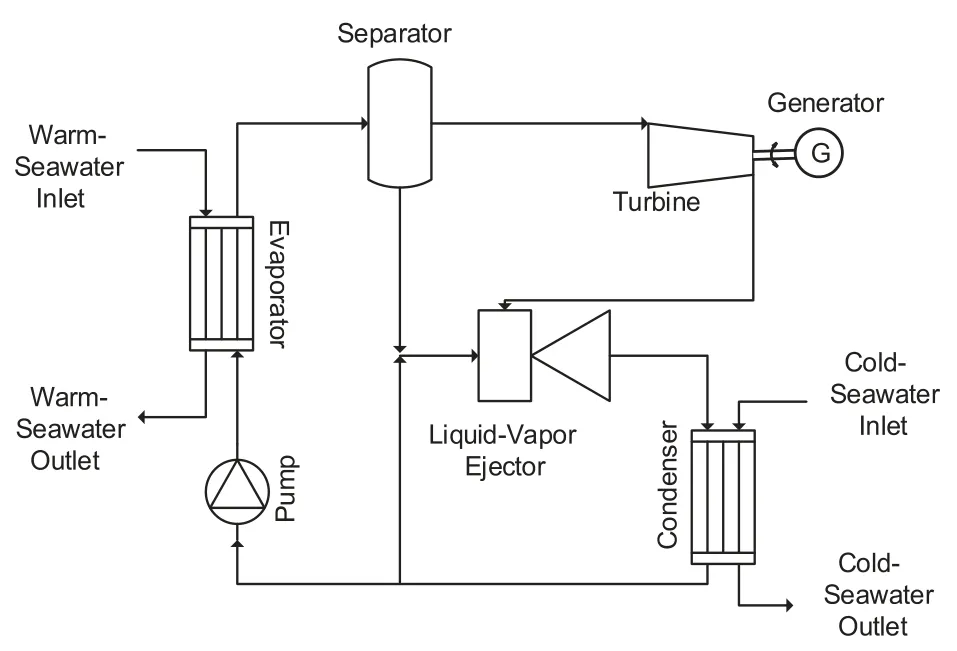
Fig.8. Power Injection OTEC cycle.
The primary goal of Samsur et al.research in 2021 [32] was to compare the performance of the suggested OTEC closed Rankine cycle using ammonia with the simple OTEC Rankine cycle.The plant uses the Rankine cycle to generate power,taking into account a seawater temperature difference (surface and deep) of around 20°C.The suggested OTEC Rankine cycle was tested using the same created model,which resulted in an increase in the thermal effi-ciency from 3.43% to 7.98%.As shown in Fig.9,the closed OTEC cycle,which includes a better condenser cooling system and interstate superheating,increased the system competency of an OTEC power cycle.
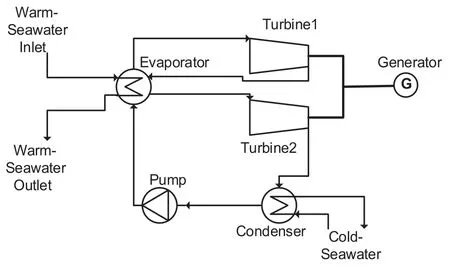
Fig.9. Modified evaporator and condenser heating and cooling systems.
In 2020,Shoaib et al.[33] presented the integrated OTEC system depicted in Fig.10.This study used a hybridization of OTEC with other technologies like hydrogen production including a solar collector flat plate,an organic Rankine cycle (ORC) and an Polymer Exchange Membrane (PEM) electrolizer enhanced by a thermoelectric generator (TEG).According to the results obtained,the exergy efficiency increased by 6.27% adding a TEG to the solar-OTEC system.

Fig.10. Solar-OTEC system and PEM electrolyzer for hydrogen production.
Wu et al.[34] established a constructed model for the thermodynamic optimization of the OTEC technology together with a dual-pressure ORC (DPORC).As shown in Fig.11,the OTEC system was designed optimally with a set of heat exchangers and a fixed dual-pressure.The net power outputs increased by 2.80%,4.66%,9.95%,and 14.95% following the main,double,triple and sextupledesigned thermodynamic optimizations respectively.An increase in the total working fluid mass flow rate,input temperature of warm seawater and the turbine wheel diameters enhanced the net power production.The DPORC outperformed the Solar-ORC system in terms of net power generation and thermal efficiency.

Fig.11. An OTEC system with a DPORC.
2.2.OTEC pure working fluids research
In general,the heat source in an OTEC power generating system is around 25 °C,whereas the cold source temperature is 5 °C.The performance of the turbine,heat exchangers,pumps,other components and the thermodynamic cycle is frequently influenced by the physical parameters of the working fluid [35–38].Consequently,the selection of an acceptable working liquid is critical for the performance of closed-cycle OTEC power systems.
In most cases,the working liquid must match the following criteria [39–42] :
(1) Protection of the environment,such us preventing harm to the layer of ozone in the atmosphere and the possibility for a room temperature impact.
(2) Toxicity,flammability and explosiveness resistance,as well as the corrosion resistance of equipment and pipes.
(3) Chemicals stability,which includes non-decomposability(e.g.the maximum operating temperature must not be higher than the temperature at which decomposition occurs)and chemical properties permanency during the operating states;
(4) Critical values of the operating fluid characteristics,such as condensation and evaporation temperatures;
(5) Cost affordability.
While the turbine is operating,the dry working medium should be chosen as often as feasible,taking into account the thermodynamic properties of the working fluid.As in the temperature-entropy graph,the saturated steam line has a positive slope,entering the area of the two-phase through the expansion [43,44].As a result,it is more probable that a better thermal efficiency can be reached.On the other hand,the saturated vapor line slope is passive,making it easy to be liquified and creates drops in the turbine.These drops may bring erosion and pitting on the blade roof,lowering turbine efficiency and reducing the turbine life operation[45].Based on the aforementioned variables,the thermal and exergy efficiencies of the cycle and the economic feasibility are the key parameters for selecting a suitable OTEC working fluid.
The most extensively refrigerant used is ammonia (NH3).This is currently the best working liquid in the OTEC power production system developing a Rankine thermodynamic cycle [46,47].Wang et al.[48] used a particle swarm optimization with several objective techniques for developing a novel OTEC system connected to an ORC generator.The performance parameters selected as key variables were the following: cold seawater temperature at the condenser outlet,warm seawater temperature at the evaporator outlet,evaporating and condensing temperature,degree of superheating and depth of cool seawater.In addition,six working fluids were investigated,providing R717 and R601 the best results.
Rosard [49] investigated the design characteristics of the turbine in a closed OTEC cycle using NH3as working fluid.In addition,working fluids like propane was studied,keeping the same size as their turbines.The research looked at 11 different working fluids and found that the turbine employing carbon dioxide as a working fluid had the lowest size but the greatest operating pressure.However,when propane was used and their turbine sizes were kept the same,the turbine using ammonia got twice the power of the one using carbon dioxide.As a result,ammonia was suggested as the best suitable operating fluid.
A big size OTEC with heat exchangers and high equipment costs were evaluated [50,51].It was also concluded that ammonia was the best option.
Min-Hsiung Yang et al.[4] calculated the effects of evaporation temperatures,in addition to the temperature differences between the intake and output in warm and cold seawater.The target parameter of the heat transfer with a limited temperature difference is the net power production to the entire heat transfer area of the heat exchanger.The working fluids analyzed included R-717,R-245fa,R-134a,R-152a and R-600a.The results showed that R717 outperformed the rest of operating fluids in terms of the objective parameters and R600a outperformed in terms of thermal effi-ciency.
The effects of NH3and R123 on the heat recovery and thermal efficiency of organic Rankine cycles were studied by Liu et al.[52] in 2004.It was discovered that lower working fluid critical temperatures achieved lower thermal efficiencies.It was also found that the maximum overall heat recovery efficiency occurred for a certain evaporation temperature between the condensing and heat source intake temperatures.
Kim et al.[53] introduced,in 2006,a subcritical OTEC cycle by a variety of operating liquids and degrees of superheating and sub-cooling.Twelve different working liquids were studied and classified into three groups: dry,isentropic and wet.R404A and R717 had the maximum and minimum thermal efficiency among the wet working fluids evaluated,respectively.The cycle with R22 had the maximum thermal efficiency among all dry working fluids.R717 fared top for being a cycle working liquid among others in terms of heat transfer area,pump size and thermal efficiency.
The thermodynamic issues of the working fluid selection in the OTEC closed cycle was investigated [54].This work presented the benefits and drawbacks of the following working liquids: R125,R124,R143a,R507a,R152a,and R134a.
The thermal efficiency of the OTEC Rankine cycle was investigated and computed using an assortment of working fluids,including R236fa,R218,R601,R600a,R245fa,and R227ea [55].According to the results,higher working fluid critical temperatures increased the thermal efficiency.Furthermore,n-butane (R600) was better suited to an OTEC system with organic Rankine cycle due to its higher thermal efficiency.
Hung et al.[56] studied the OTEC system operating with different working fluids R123,R12,R500,R11,R114,R152a,R113,R502,C6H6,C8H10,and C7H8that covered all dry,isentropic and wet fluid groups.It was found that using a working liquid with greater latent heat yielded higher cycle efficiency.This trend was more noticeable for small temperature cycles than for higher temperature cycles [56].
Sun et al.[57] investigated and improved the Rankine cycle system using ammonia or R134a as the working fluid.This work discovered that ammonia was the optimum working fluid for the ORC system in terms of net power production.
Six working liquids were used to compare cycle parameters,including ammonia,at various intake of turbine pressures,found that R143a,R32,and R125 were perfect working fluids overall.Nonetheless,the ammonia-based working liquid had a larger and more steady working pressure and was suited for plant process,except for the fact that it was hazardous and flammable [58].
A subcritical OTEC cycle thermal efficiency was shown to be substantially determined by the condensation temperature,evaporation temperature,and the efficiency of the turbine,the vapor,superheating degree at evaporator exit,and pump efficiency having minimal impact.In terms of both the size of the major components and thermal efficiency,ammonia (R717) appeared to remain an acceptable working liquid once more [59].
A theoretical investigation was carried out using a combination of a non-azeotropic working fluid made of R227ea and ammonia.The study set the optimal ammonia to R227ea ratio,at which point the Rankine cycle best thermal efficiency was achieved [60].Ammonia was taken as a standard for comparing thermal efficiency and other metrics using eight various kinds of working liquids under different condensation temperatures,ammonia performed far better than organic working liquids [61].
A theoretical model was conducted using eleven working liquids to improve the OTEC system connected to an organic Rankine cycle generator for small applications where the total electrical power was preset at 125 kW.According to the results,the maximum net electric power was found in ammonia (99.3 kW) and,pumping losses (20.59% of gross revenue) are the least.Sensitivity analysis revealed that deep and surface seawater temperature variations in all plant performance parameters were affected significantly [62].
A model was made and applied to test the efficiency of the basic OTEC closed Rankine cycle with eight various working liquids.The ammonia-water mixture performed very well in terms of heat transfer properties.In terms of heat transmission properties,the ammonia-water mixture behaved admirably with a 4.04% thermodynamic efficiency.While pure ammonia has a thermodynamic efficiency of 3.21%,propane has a thermodynamic efficiency of 3.09%and the other refrigerants have a thermodynamic efficiency between 3.03% and 3.13%.In comparison to all other working fluids,propane has the lowest capital cost and the lowest toxicity while having a lower thermodynamic efficiency.As a result,propane has the ability to be employed to replace ammonia as a safe and clean working liquid,boosting OTEC technology even further [63].
2.3.Cycles description of mixture working fluids
In OTEC Rankine cycles,ammonia is a common working fluid[18,64,65].The irreversible losses during the heat exchange process are considered in the Rankine cycle because of its isothermal condensation or evaporation,which restricts the increase of system performance.Researchers should also consider ammonia’s drawbacks,such as its unpleasant odor,toxicity,the potential for explosion and combustion below certain conditions as well as its corrosion impact on copper and its alloys [3,66,67].
Kalina suggested his cycle utilizing a non-azeotropic working liquid [68–70] to avoid irreversible losses through the phase transition heat process,as shown in Fig.12.The temperature variation of the non-azeotropic working liquid in the phase transition process corresponded fully with the temperatures of the cold source and heat source,resulting in a reduction in irreversible losses [71,72]Fig.13.shows a diagram for temperatures and entropy for ORC with both mixed and pure working fluid.The working fluid of the Kalina cycle was a combination of water and ammonia,that allowed for varying evaporation temperatures [73].

Fig.12. Kalina cycle.
The concentration of ammonia reduced during the evaporation process,which resulted in a rise in the solution’s boiling point,assuring that heat transfer process was compatible.As a result,the thermal efficiency was enhanced.Simultaneously,the expelled gas was utilized to overheat the working fluid beforehand it passed through the evaporator,decreasing the usage of warm ocean water.When employing pure working fluids,both theoretical and experimental results have revealed that the Kalina cycle has better thermal efficiency than the Rankine cycle.As a result,the Kalina cycle’s system performance improved [74–77].
On the other hand,the Kalina cycle,which uses turbine exhaust gas for heat recovery,had no effect,because of the small difference in temperature between the ocean water sources.Uehara created the Uehara cycle [78] in 1999,as illustrated in Fig.14.The Uehara cycle employed a turbine with two stages with a combination of water and ammonia as the working fluid.To limit heat losses throughout the cycle,the Uehara cycle abolished heat recovery from the exhausted gas phase and introduced the recovery with ammonia-depleted solutions as intermediate extraction regeneration cycle.As a consequence,the Uehara cycle has a thermal efficiency of 5.4%,a gain of 10% over the Kalina cycle [79].
Due to the fact that a portion of the working liquid is being taken from the turbine to warm the working liquid before entering the evaporator,energy loss in the condenser can be decreased by using an intermediate extraction regenerative cycle and an ammonia-depleted solution recovery.As a consequence,the temperature of the working liquid at the evaporator’s intake rises,and the heat exchange temperature difference between ocean surface warm waterfalls and working fluid,potentially increasing the heat transfer area.While the system’s capacity installed is stated,however,increasing efficiency may result in a reduction in the heat transfer area.While comparing the effects of these two,the increase in efficiency takes a higher effect on the evaporator’s heat exchanger area.The Uehara cycle system,on the other hand,had a more sophisticated structure than the Rankine cycle.
A new cycle was introduced in 2012,this cycle was called the Guo Hai cycle [80],which is depicted in Fig.15.The working liquid in this cycle was the NH3–H2O combination.The mixture was made warm in the evaporator before entering the separator to separate the NH3gas from the mixture.The turbine was driven by gas,and a part of that gas was used to heat the basic working liquid of Regenerator 2 to saturation.The basic operating fluid of regenerator 1 was heated from the separator’s ammonia-depleted solution,allowing the NH3-depleted solution energy to be saved and used by the turbine to do extra work.As a result,the system efficiency increased.In Regenerator 1,the heat exchange can be used to save energy by obviating the requirement for a pump.Therefore,the ammonia pump head in this new cycle could be better suited [81].By combining both cycles,the regenerative intermediate extraction cycle into the system and the regenerative ammonia-depleted solution,the Guo Hai cycle made greater utilization of the cycle’s heat than the Rankine cycle.When the warm water temperature was 27 °C and the cold water temperature was 5 °C,the thermal efficiency was found to be 5.16% [82].

Fig.15. The cycle of Guo Hai.
In 2012 Uehara cycle was enhanced by incorporating ammonia and a reheating absorption cycle.The cycle’s working fluid was an NH3–H2O combination,and it included a reheater and a liquidvapor ejector,both of which used ocean water as a heat source to preheat the exhausting gas by way of turbine 1 followed by turbine 2.The driving liquid was the exhausted gas,which was ejected into the ejector,and the driving liquid was the evaporator highpressure ammonia-depleted solution.
Therefore,these were combined in the ejector and then entered the condenser.The ejector reduced the turbine back pressure while raising the mixed solution pressure to condensing pressure.This new cycle has better thermal efficiency than the previous one.The cycle had a thermal efficiency of 5.31% when cold and warm ocean temperatures were 4 °C and 28 °C,respectively.Furthermore,an exergy study based on the second law of thermodynamics revealed that the regenerator had the highest losses,with the heat transfer temperature difference being the main factor Fig.16.shows a schematic of the cycle [83,84].
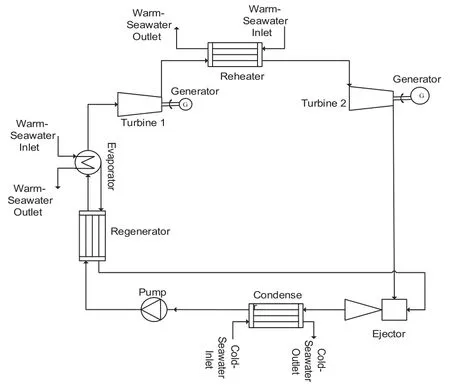
Fig.16. A cycle of power with NH3–H2 O reheating-injecting absorption of the power circulation.
Chengyu Lia,et al [85].studied CO2-based dual zeotropic mixtures in a Rankine cycle.Six organic working fluids were chosen and different concentrations of CO2were explored to achieve different temperature glides.Pure working fluids such as NH3and CO2were also tested in comparison to blends.The thermodynamic performance of the OTEC was evaluated using its thermal efficiency and its net specific power.The findings suggest that CO2-based dual zeotropic mixtures could increase the thermodynamic efficiency of cycling with ocean water
The mixture composition influenced the Rankine cycle,and composition having a 7–8 °C evaporation temperature glide was proposed.The dual mixtures had a greater specific energy output than pure working liquids,with CO2/R32 (0.76/0.24 wt%) producing the highest value,about 38% higher than pure NH3.The thermodynamic data continue to support the Rankine cycle with CO2-based dual mixture as a viable OTEC.
To improve the condensation temperature needed for the Rankine cycle,reduce cold water pumping capacity and reduce pipeline water cost,the use of two ejectors in the cycle has been proposed[86].As in the cycle,depicted in Fig.17,an ammonia-water combination was employed,and the exhausted gas was warmed to a superheated condition before being used in the 2nd turbine.For the 1st ejector,the driven fluid was exhausting gas and high-pressure ammonia was used as the driving liquid (made warm by warm ocean water).They were mixed in the 1st ejector before being released.

Fig.17. Absorption cycle of power.
As a result,the pressure of the ammonia-wealthy solution might be raised in this cycle by using two ejectors,resulting in a higher saturation temperature.This meant that the needed cold source temperature may be raised to lower the device’s cost.Theoretical examination of the cycle’s performance revealed that the generator and regenerator lost 49.8% of the exergy under specific conditions,while the ejectors lost 36.12%.The cycle’s thermal efficiency might be as high as 4.17%,the overall heat efficiency was 3.1%.
When the heat source temperature was 30 °C,the expansion ratio was 1.42 and the production pressure was 0.6 MPa.Because the temperature of pure working fluid stays constant throughout evaporation,the temperature variance between the source of heat and the working liquid is so large at the exit of the evaporator.Consequently,a big entropy quantity might be yielded throughout the procedure,increasing the cycle irreversible power losses and decreasing its influence.
Iqbal et al.[88] performed a study of comparison on the Rankine cycle performance by using propane either alone or in combination with other liquids (the proportions of propane,butane,and ethane in the molar mix were 98% propane,1% butane,and 1%ethane) under identical circumstances as in 1976.The findings revealed the mixed working liquid not just minimized the volume of the heat exchanger and enhanced the system’s thermal influence,but also improved the performance for heat exchange.Mixtures of NH3–H2O were also utilized as non-azeotropic working fluid s.For example,Kalina [89] utilized NH3–H2O working liquid mixture in the cycle of Uehara,and the Kalina cycle [78–88] utilized a mixture of NH3–H2O as well.Uehara et al.[90] investigated the Kalina cycle in 1995,utilizing a working liquid mixture HFC32/HFC134a,and investigated the effect of different parameters of the system on the influence of cycle,i.e.,ocean water as warm and cold inlet temperatures,and the inlet of turbine pressure.If the ocean’s cold and warm temperatures were 4 °C and 28 °C,respectively,the thermal effect of the cycle might reach 5%.
The influence of heat sink temperature,the heat source,the effect of flow rate on the working fluid flow rate,as well as the NH3concentration in the NH3–H2O combination,were examined.Establishing the rising of NH3mass fraction in the NH3–H2O mixture elevated the power of the turbine and output of the system,whereas the working fluid rate of flow had various influences on the net and total system output with various NH3concentrations [91].Recently a new azeotropic R32/R290 mixture of (67%: 33%) regarding OTEC was suggested.The R32/R290 benefit of the mixture resulted in a significant decrease in the turbine size and exchange of heats,which lead to reducing the cost [92].
In a Rankine cycle with dual stages,employing pure working liquid,the influence of minimizing irreversible heat exchange process losses on system performance was assessed.The system properties of the single-stage Rankine cycle,dual-stage Rankine cycle,and Kalina cycle were investigated.This investigation employed a straightforward way of calculating the difference in temperature between the working liquid and saltwater.According to the results,as compared to the Kalina cycle with an NH3/H2O mixture,the dual-stage Rankine cycle with pure working liquid can reduce irreversible heat exchange loss in the heat transfer process.Kalina and Dual-stage Rankine cycles can boost power production by lowering irreversible losses in the cycle,based on the greatest power efficiency attained in the study [25].
3.Mechanical applied problems in OTEC
During the operation of the OTEC system,facilities would encounter various problems caused by external and internal fluids.There are internal and external mechanical problems.The turbine is optimized for a number of internal mechanical difficulties.External issues include hydrodynamics applied to the cold water pipe.
3.1.The OTEC system steam turbine mechanism
Steam turbines are frequently used in the energy industry in order to convert thermal energy to mechanical energy.The poor efficiency of the OTEC system prevents the use of ocean thermal energy,whereas the use of a steam turbine would alleviate this problem.Consequently,the key to enhancing thermal efficiency is to select a steam turbine with the best characteristics.
Many academics have worked to increase the OTEC system’s efficiency throughout the years.The geometry of the blades,viscosity,flow rate,secondary flow,and even the rapid expansion of the outlet impacts the efficiency of the steam turbine.Using numerous steps instead of a single-stage is the traditional way for increasing efficiency.According to prior research,steam turbines may be split into two kinds based on the direction in which the working liquid flows (radial flow and axial flow).The optimum alternative for an OTEC system,according to a later study,is a radial-flow turbine[93].
Academics have devoted greater notice to the radial-flow turbine for the OTEC system since then.Marelli et al.[94] and Kang[95] conducted studies to determine the efficiency of the radialflow turbine.Aside from experiments,several researchers employed computers to model the OTEC system’s turbine.Nithesh,for example,showed how a radial-flow turbine works and used ANSYS to perform simulations with various parameters to get the optimum results [96].Other researchers designed and built a turbine with radial inflow and predicted the performance of the turbine shape using extensive numerical modeling.They conclude that blade edge filleting is critical for improving turbine performance throughout a broad area of operating conditions.To enhance turbine efficiency [97],Nithesh and Samad [98] employed CFD modeling to select the rotor blades,nozzle stagger angle variation,and numeral of nozzles.Generally,the problems for steam turbine design in an OTEC system may be described in two categories: finding the most efficient turbine and coping with the effects of fluctuating seawater temperatures throughout the year.Mechanical problems frequently contradict the device use.Therefore,the equilibrium between costs and efficiency must be considered as the goal of device design,which reduces the cost via increasing output power or efficiency [99],and the device’s cost is able to reduce by resolving mechanical issues.The adjustment of the thermodynamic cycle with the steam turbine can improve the system efficiency,resulting in more output power.
3.2.Hydrodynamic effects on the cold water pipe in OTEC systems
In addition to internal fluid problems,OTEC devices are subject to the impacts of the maritime environment.These influences can cause significant oscillation problems in the floating OTEC plant.Because the OTEC device requires a temperature difference of at the very least 20 °C to work.The length of the cold water pipe might range from 400 to 10 0 0 m and have a diameter of 40 m[100].Mooring systems must also be considered when it comes to floating gadgets [101].The complex dynamic behavior is caused by the hydrodynamic forces acting on the large-scaled pipe,reducing the system’s service life.Waves and currents affect the pipe,much like any other offshore construction.As it may be seen in Fig.18,the issues with the OTEC system’s cold water pipe may be broken down into three categories: strength and fatigue analysis(including collapse and severe assessments),pipe vibration (flowinduced vibration and vortex-induced),and coupling analysis (together with the vessel) [102].
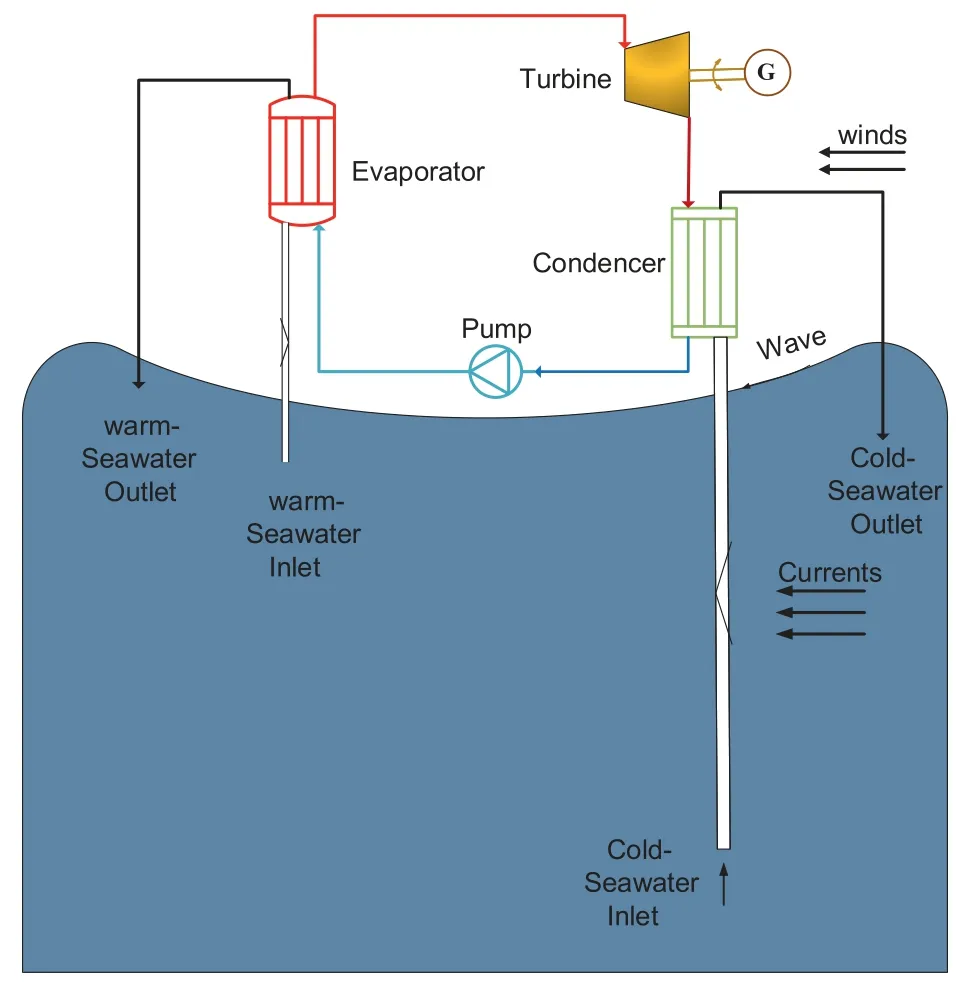
Fig.18. The cold water pipe schematic diagram.
3.3.The floating OTEC device performance at sea
Winds,currents,and waves affect offshore structures,including floating OTEC devices,causing the platform to move.It is conceivable that this would occur in the event of severe ocean conditions,such as hurricanes and strong winds,occur,if loads are not adequately assessed.Although,under normal circumstances,the upheave wave motion is restricted to 10% of the depth of the ocean[103].This limiting aspect for the OTEC device is the assurance of receiving cold water within a particular depth range.Attempts to examine the seakeeping capability of the floating OTEC platform have previously been tried.Barr et al.[104],for example,used the analytical approach to assess the seakeeping performance of the OTEC device.Then Kowalyshyn and Barr [105] estimated an actual example seakeeping performance.The platform hydrodynamics was later studied by Ertekin et al.[106] to maintain the device within the scope of regions.
4.Conclusion
This study has analyzed numerous models of OTEC systems and has provided an overview of the main difficulties in OTEC technology.To improve the efficiency of the OTEC system,the steam turbine must be optimized.The efficiency of the OTEC power generation system is often poor as a result of the limitations imposed by the small temperature difference of the water.To improve the available temperature difference,a variety of types of energy can be used.Solar power,for example,can increase a system’s temperature difference,resulting in higher work output,higher device efficiency,and lower power generation costs.When a non-azeotropic combination undergoes a phase change process,the degree of temperature of the warm ocean water almost equalizes.As a result,it has the potential to reduce heat transfer losses and improve thermal efficiency.
Improving the turbine working pressure difference by the increasing intake pressure and reducing the back pressure can increase the turbine power and therefore improve the thermal efficiency of the system.The driving fluid in the ejector creates a passive pressure by rapidly exiting the nozzles.As a result,an ejector could be added to the system,with the exhaust gas serving as the driven liquid,reducing the turbine outlet pressure,raising the turbine operating pressure difference as well as the power output of the cycle.When the working fluids are different,the type of ejector can exchange the heat of the cycle working fluid which can be used to optimize the evaporator temperature input and decrease the condenser superheat recovery,reducing the use of ocean water.and improving thermal efficiency.It is difficult to discover a fluid that works with all sorts of perfect qualities that meets performance criteria in real applications.Ammonia is still a good pure working liquid,and a combination of NH3-H2O is a good nonazeotropic working liquid.
Declaration of Competing Interest
The authors declare that they have no known competing financial interests or personal relationships that could have appeared to influence the work reported in this paper.
 Journal of Ocean Engineering and Science2023年5期
Journal of Ocean Engineering and Science2023年5期
- Journal of Ocean Engineering and Science的其它文章
- New solitary waves and exact solutions for the fifth-order nonlinear wave equation using two integration techniques
- Numerical treatment of temporal-fractional porous medium model occurring in fractured media
- Optimal Kalman-like filter for a class of nonlinear stochastic systems
- Dynamic quantitative risk assessment of LNG bunkering SIMOPs based on Bayesian network
- New soliton wave solutions of a (2+1)-dimensional Sawada-Kotera equation
- Prediction of residual tensile strength of glass fiber reinforced polymer bars in harsh alkaline concrete environment using fuzzy metaheuristic models
